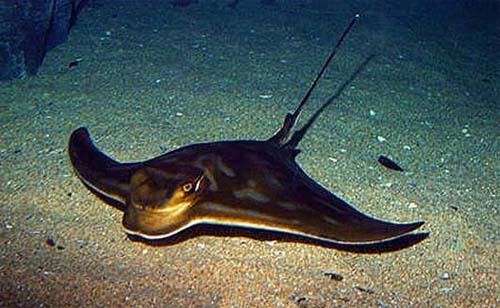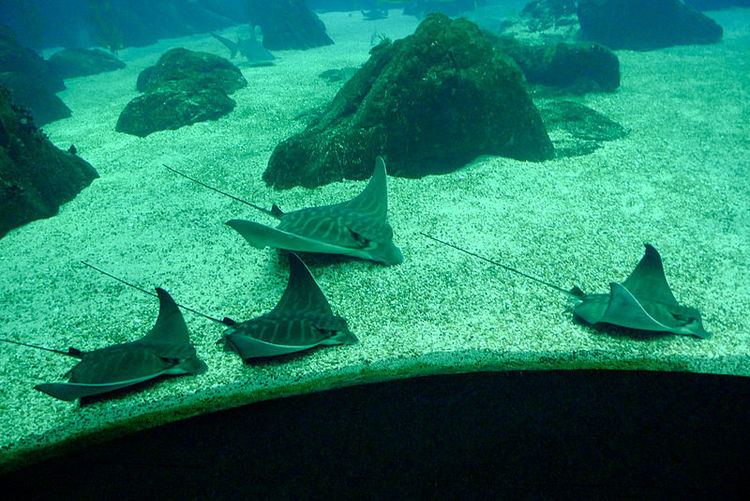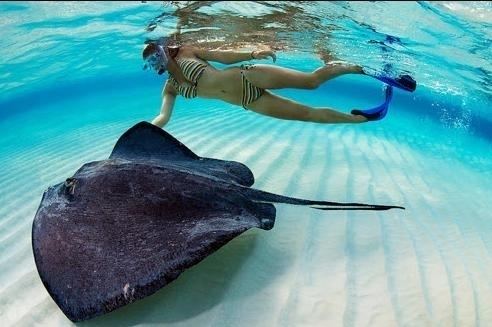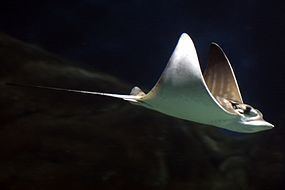Subclass Elasmobranchii Family Myliobatidae Scientific name Pteromylaeus bovinus Rank Species | Phylum Chordata Genus Aetomylaeus Higher classification Pteromylaeus | |
 | ||
Similar Pteromylaeus, Batoids, Eagle ray, Common eagle ray, Stingray | ||
Bull ray from achziv
Aetomylaeus bovinus, also known as the Bull ray is a species of large stingray of the family Myliobatidae found around the coasts of Europe and Africa.
Contents

Description

This fish is named the bull ray because of the shape of its head and it is sometimes called the duckbill ray in South Africa for its long, flat, round snout. Bull rays are often 1.5 m (4 ft 11 in) and sometimes up to 2.5 m (8 ft 2 in) in length from snout to tip of tail, 1.8 m (5 ft 11 in) in width and weighing up to 100 kg (220 lb). Females are larger and heavier than males. It has a tail spine averaging 6.1 cm (2.4 in) in length in females and 3.2 cm (1.3 in) in males.
Distribution and habitat

The full distribution of the bull ray is uncertain but it is known to be found in the Black Sea, the Mediterranean Sea, the eastern Atlantic Ocean between Portugal and Guinea, the Atlantic from north of Saldanha Bay in western South Africa and round the rest of the South African coast into the Indian Ocean up to Maputo Bay in southern Mozambique, also Zanzibar and Kenya.

It is found between the surf zone and depths of 65 m (213 ft) or more and also enters estuaries and lagoons. It frequents both the bottom and the surface and sometimes leaps from the water.
Biology

The bull ray feeds on various invertebrates including crabs, hermit crabs, squids, prawns, gastropod molluscs and bivalve molluscs. It is viviparous and gives birth to live young. The gestation period is believed to be about one year and three to four young may be carried at one time.
Status
This fish has been relatively little studied and most of the data available comes from South Africa. It is sometimes caught in artisan fisheries and is likely to be impacted by coastal development. The IUCN does not believe that there is enough information available to decide on its correct status and has ranked it as being "Data Deficient".
